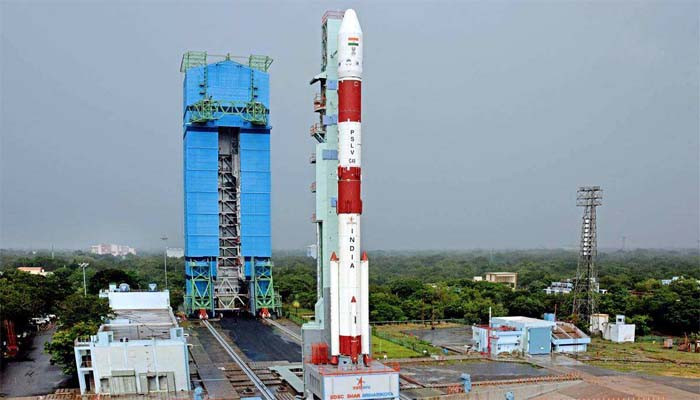The Indian Space Research Organisation (ISRO) has developed a rocket launch vehicle called the Polar Satellite Launch Vehicle (PSLV) that has become a reliable and versatile launch vehicle for placing satellites into orbit. The PSLV has been used for a wide range of missions, including earth observation, remote sensing, navigation, meteorology, and interplanetary exploration. In this article, we will explore the science behind the PSLV and how it has become a valuable asset for ISRO.
The PSLV is a four-stage rocket, with the first stage powered by solid fuel and the other three stages using liquid fuel. The rocket’s design allows it to carry a variety of payloads, including multiple satellites, into different orbits. The PSLV is also capable of launching satellites into polar and sun-synchronous orbits, which are particularly useful for earth observation and remote sensing missions.
One of the key features of the PSLV is its ability to place multiple satellites into different orbits in a single launch. This is achieved through the use of multiple payload adapters and separation systems, which allow the rocket to release satellites at different altitudes and velocities. The multiple payload adapters are designed to accommodate a range of payloads, from small CubeSats to larger payloads, such as earth observation satellites. The separation systems are designed to release the payloads at precisely the right time and velocity, ensuring that the satellites are placed in the correct orbit.
The PSLV also uses an advanced navigation, guidance, and control system to ensure accurate and precise deployment of the satellites. The rocket’s computer system continuously monitors the rocket’s performance and makes adjustments to the rocket’s trajectory as needed. The navigation system uses a combination of sensors, including an inertial navigation system and a GPS receiver, to determine the rocket’s position and velocity. The guidance system uses this information to calculate the correct trajectory for the rocket, and the control system adjusts the rocket’s propulsion system to maintain the correct trajectory.
The PSLV is powered by a combination of solid and liquid fuel propulsion systems. The first stage of the rocket is powered by a solid fuel rocket motor, which provides the initial thrust to lift the rocket off the launch pad. The second, third and fourth stages are powered by liquid-fuel rocket engines, which provide the additional thrust needed to place the payloads into orbit. The liquid fuel engines use a combination of liquid hydrogen and liquid oxygen as propellants, which are stored in tanks within the rocket.
The PSLV has a proven track record of success, with over 50 successful launches to date. The rocket has also been used for a number of prestigious missions, including the launch of India’s first lunar probe, Chandrayaan-1, and the Mars Orbiter Mission (MOM), which successfully placed a spacecraft in orbit around Mars.
One of the most significant achievements of the PSLV is the successful launch of 104 satellites in a single flight, which was accomplished in 2017. This was a major milestone for ISRO and demonstrated the rocket’s ability to deploy multiple payloads into different orbits in a single launch.
The PSLV continues to be a valuable asset for ISRO, and the organization has plans to use the rocket for a number of future missions, including the launch of a new generation of earth observation satellites, interplanetary missions, and the development of reusable launch vehicles.
In conclusion, the science behind the PSLV is a combination of advanced rocket design and propulsion systems, precision navigation and guidance, and sophisticated payload separation and deployment mechanisms. With its proven track record of success, the PSLV is a valuable asset for ISRO and will continue to play a critical role in the organization’s space exploration efforts. The PSLV has proven its capabilities and reliability in various prestigious missions.
